Lesson 18: Bicycle and Pedestrian Connections to Transit
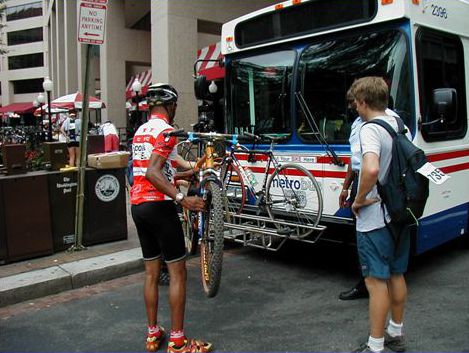
Lesson Outline
- The importance of integrating pedestrian and bicycle transportation with transit.
- Pedestrian connections to transit services.
- Bike-on-bus programs.
- Bike-on-rail programs.
|
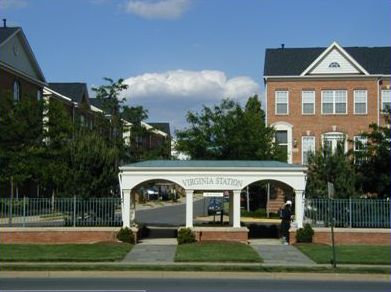
|
Why Integrate Pedestrian and Bicycle Transportation with Transit?
- Significant amounts of the population live near transit stations in urban areas.
- Improvements for pedestrian and bicycle access lead to increased transit ridership.
- Providing bicycle accommodation on transit vehicles increases the catchment area for transit riders.
- Vehicle and station modifications can be made at modest cost.
Pedestrian Connections to Transit
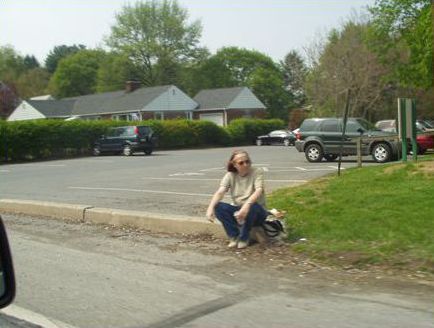
|
| 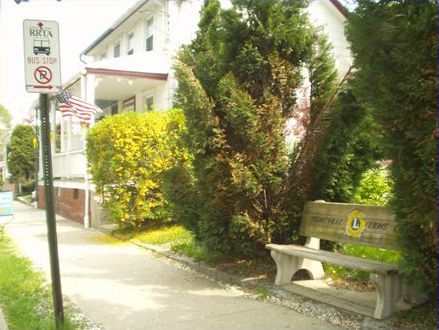
|
| Pedestrian waiting for the bus | | Bus stop with sidewalk and bench |
How Bicycles Should Be Integrated with Transit
- Bike racks on buses.
- Transporting bikes on light and heavy rail, commuter rail, and intercity rail vehicles.
- Bike parking.
- Station design improvements.
- Links to transit stops.
- Bicycle-ferry programs.
|
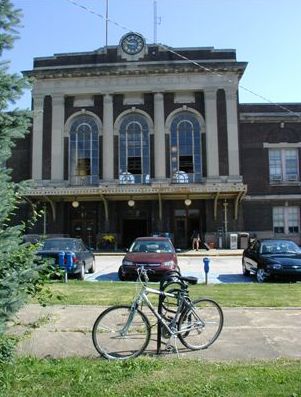
|
Bicycle-on-Bus Programs
- Front-mounted racks.
- Inside bus.
- Successful programs.
|
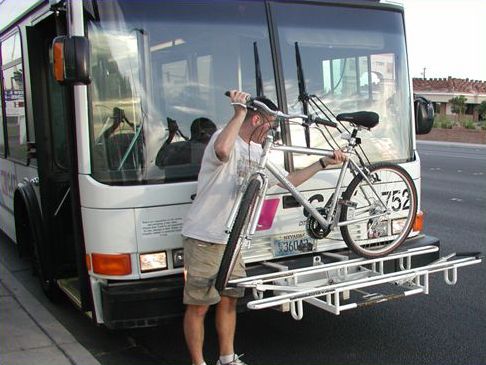
|
Transit Agency Concerns
- Schedule adherence.
- Safety and protection of transit property.
- Equipment procurement.
Bicycle-on-Rail Programs
- Bring bike inside rail car.
- Time restrictions.
- Rail car design constraints.
- New rail car design to accommodate bikes: "California Car."
|
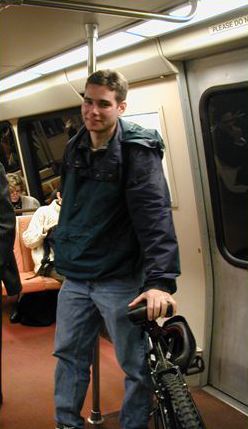
|
Elements of Successful Bike-Transit Programs
- Demonstration project.
- Advisory committees.
- Marketing and promotion.
Lesson Summary
- Providing good links to transit for pedestrians and bicyclists is essential.
- Providing good facilities for pedestrians and bicyclists at transit stations is essential.
- Linking pedestrians and bicyclists with transit can increase transit ridership.
FHWA-HRT-05-120
|
